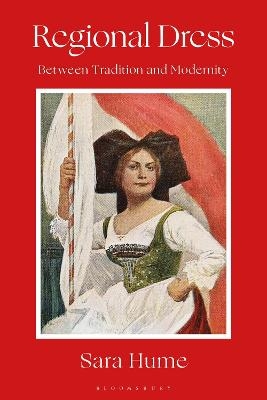
Regional Dress
Bloomsbury Visual Arts (Verlag)
978-1-350-14798-0 (ISBN)
- Titel ist leider vergriffen;
keine Neuauflage - Artikel merken
Specifically, Sara Hume unpacks why Alsatian dress was adopted as a symbol of loyalty to France despite being closer in style to German dress practices. She explores the impact of political and geographical tensions on the appearance and function of traditional clothing, for example in Alsace’s situation at the border between France and Germany and in its transformation from disputed territory into capital of a united Europe. Logically progressing chapters reveal how modernity did not drive out tradition in rural communities but rather led to processes of adaption, preservation and re-evaluation.
Through a rich variety of primary sources including costumes, illustrations, political cartoons, legal documents and oral histories, Regional Dress sheds light on the little known and rarely documented experiences of rural Europeans. Its material culture approach to the study of regionalism is essential to students of traditional and folk dress history, European history and design history.
Sara Hume is Professor and Curator at Kent State University Museum, USA.
List of Plates
List of Figures
List of Maps
Acknowledgements
Maps
Introduction
1. Religious Performance
Relationship between religion and dress
Processions and the performance of Catholicism
Performance of Protestantism
Other minority religious groups
Exclusion of minority religions from public spaces
Dress as ritual
Declining link between regional dress and religious observance
2. Visual Representation
Field guide to the folk
Photography of regional dress
Realism and regional dress
Book illustrations
Art Nouveau and the Alsatian Awakening
Spindler as photographer and ethnologue
Development of l’Alsacienne as a symbol of Alsace
3. Material Goods
Basic components of rural Alsatian wardrobes
Shift to coordinating outfits
Quantity and value of clothing
Evolution of special occasion wear
Development of retail in Alsace
Introduction of department stores
Home based industrial production
Education and apprenticeship for craftspeople
Apprenticeships in the interwar period
Tailoring and dressmaking in literature
4. Museum Objects
Roots of folk museums
Founding of the Musée alsacien
The collection and its acquisition
Nature of the early displays
Producing and reproducing the image of regional culture
Kermesse: masquerade and commerce
5. Living History
Non-religious festivals
Wedding processions
Turn-of-the-century festivals
Folklorization of Fête-Dieu
Folk dress in political rallies
Organization of folk groups
Nazi influence on folklore
Re-emergence of interest in folklore
Conclusion
Bibliography
Index
| Erscheinungsdatum | 15.07.2022 |
|---|---|
| Zusatzinfo | 22 color and 63 bw illus |
| Verlagsort | London |
| Sprache | englisch |
| Maße | 156 x 234 mm |
| Themenwelt | Kunst / Musik / Theater ► Design / Innenarchitektur / Mode |
| Kunst / Musik / Theater ► Kunstgeschichte / Kunststile | |
| Geisteswissenschaften ► Geschichte ► Allgemeine Geschichte | |
| Geisteswissenschaften ► Geschichte ► Regional- / Ländergeschichte | |
| Sozialwissenschaften | |
| ISBN-10 | 1-350-14798-2 / 1350147982 |
| ISBN-13 | 978-1-350-14798-0 / 9781350147980 |
| Zustand | Neuware |
| Haben Sie eine Frage zum Produkt? |
aus dem Bereich


